The 15 Best Sci-Fi & Fantasy Comics of 2018
Main Art by Matías Bergara/ Paul Davey/ Sana Takeda/ Ro Stein & Ted Brandt Comics Lists Comics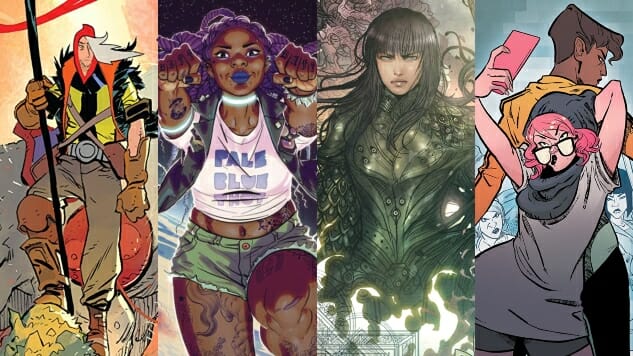
“Hey, wait a minute Paste—didn’t you already publish your big best-of list for 2018? And didn’t that list contain superhero comics, kids comics, horror comics and sci-fi/fantasy comics, all under one big umbrella? What gives?” Well, intrepid Paste reader, you’re not wrong. Paste prides itself on taking as broad a look at the medium of comics as our small team can possibly manage. Our year-end rankings don’t discriminate between capes-and-tights adventures, creepy manga, bonkers webcomics or navel-gazing “literary” graphic novels, but when compiling our master list, we realized that 2018 was a deceptively great year for sequential art, and 25 notable books just didn’t cut it. Before the holidays roll around, we’ll be honoring books that excelled in the specific categories mentioned above. Some will overlap with our main list, but many won’t—and the way rankings shift around may surprise you. A title that stood out when viewed holistically might rank lower when assessed through a specific lens, and books that didn’t make the cut for the master list can easily come out on top of these individual breakdowns. If nothing else, we hope our newly expanded categories send you into 2019 with plenty of reading material.
For this genre-tastic list, we cast a wide net over the terms “sci-fi” and “fantasy,” considering anything that we felt truly embodied the spirits of those labels. Western comics have long leaned more toward the science fiction end of the spectrum, but fantasy has made steady inroads of late, with books like Monstress leading the charge. There’s plenty of debate over specifics—does Saga, with its ample magic systems, even count as sci-fi?—which is why we did this list as a combo. Feel free to give us an elven or cybernetic earful on Twitter if you think we got anything wrong.
![]()
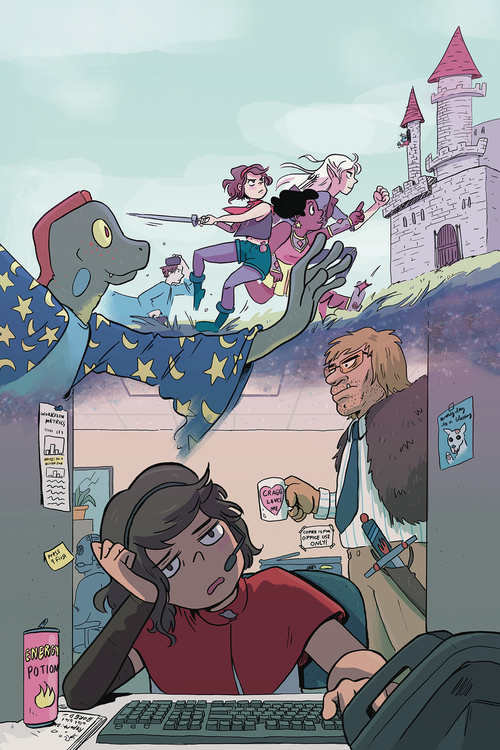
Modern Fantasy Cover Art by Kristen Gudsnuk
15. Modern Fantasy
Writer: Rafer Roberts
Artist: Kristen Gudsnuk
Publisher: Dark Horse Comics
Imagine an episode of Regular Show focused around a Dungeons & Dragons campaign and set free from Cartoon Network’s age guidelines: ta-dah, that’s Modern Fantasy. One of A&A: The Adventures of Archer and Armstrong writer Rafer Roberts’ first original series, illustrated by fan-favorite Henchgirl cartoonist Kristen Gudsnuk, Modern Fantasy follows a motley crew including a Ranger woman snoozing away at an unfulfilling desk job, a Lizard Wizard and his sketchy goblin boyfriend, a boisterous dwarf flirting it up with an uptight cleric and a potentially part-orc office drone who would much rather embrace his barbarian roots than file spreadsheets. Thanks to a magic doohickey, the plot clips along throughout the four issues, allowing all the stoner jokes to populate the margins rather than drag out the proceedings. Roberts and Gudsnuk’s down-to-earth fantasy world is all but guaranteed to put a smile on the face of any bored semi-young person, and is rife with potential for future campaigns. Steve Foxe
![]()
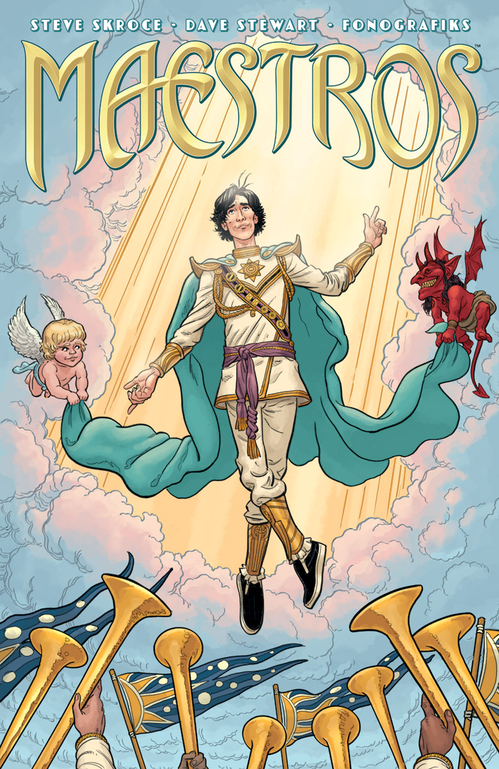
Maestros Cover Art by Steve Skroce
14. Maestros
Writer/Artist: Steve Skroce
Publisher: Image Comics
No one doubted that Maestros would be gorgeous, but shame on those of us who didn’t expect Steve Skroce to bring it on the story side, too. Skroce’s creator-owned debut as writer and artist is as accomplished as anyone could hope, with a fully realized, dazzlingly detailed magic fantasy world just beyond our own, as well as a layered plot about familial expectation and the (literal) sins of our fathers. When Willy’s god-level wizard father croaks, his dad’s enemies swiftly move in to seize power, but not before Willy inherits it for himself. What easily could have descended into a string of lushly drawn crude jokes (hey, it works for Skroce’s contemporary Geof Darrow) manages to balance the penile-enhancement magic tricks with real stakes and an impressively nuanced, complicated protagonist doing the best he can under some extremely shitty circumstances. Skroce has always impressed on titles like We Stand on Guard and Doc Frankenstein, but if Maestros is any indication, we hope he stays in the writer/artist lane going forward—especially with the sequel potential suggested in the series’ final pages. Steve Foxe
![]()
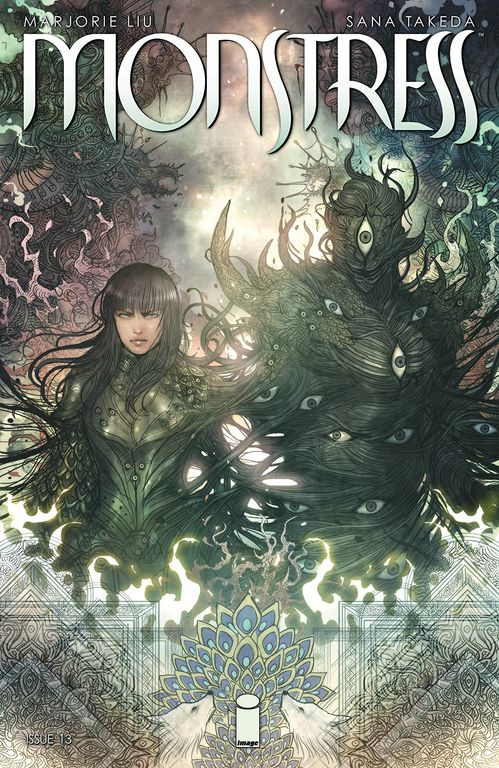
Monstress Cover Art by Sana Takeda
13. Monstress
Writer: Marjorie Liu
Artist: Sana Takeda
Publisher: Image Comics
Monstress had a big 2018, buoyed by some key Eisner wins in the middle of the year and a long-awaited return for a third arc. Marjorie Liu and Sana Takeda continue to provide one of the most authentic high-fantasy experiences in comics, full of fictional races, thrilling pirate battles, ornate designs, royal intrigue and everything else we’ve come to expect from sword-and-sorcery epics. Liu’s interest in difficult intersections of autonomy, love, lust and revenge has helped Monstress earn accolades even outside of the comics sphere—peep that Hugo Award. That’s not to downplay Takeda’s contribution; without her stained-glass digital painting, Monstress simply wouldn’t be Monstress, one of the most reliable genre offerings on stands today. Steve Foxe
![]()

FTL Y’ALL Cover Art by Paul Davey
12. FTL Y’ALL! Tales From the Age of the $200 Warp Drive
Managing Editor: Amanda Lafrenais
Publisher: Iron Circus Comics
Iron Circus Comics is an undeniable powerhouse of a publisher, launching nearly two dozen successful crowdfunding campaigns for its catalogue since the company’s inception in 2007. Among this year’s offerings was FTL Y’ALL!, an anthology collecting stories from 27 creators that seek to answer one simple question: What would you do if you could rig a faster-than-light engine for just $200? Iron Circus publisher Spike Trotman and FTL Y’ALL! managing editor Amanda Lafrenais have a keen eye for talent and a skill for anthology curation. If you’re into messy, homebrewed sci-fi, FTL Y’ALL! is a must for your shelf. The stories run the gamut from light-hearted, such as Kay Rossbach’s exploration of the myriad inconveniences of interstellar spaceports in “M.S.P.I.P.S.P.,” to more introspective and thoughtful explorations of what it truly means to find yourself adrift in the vast reaches of space. FTL Y’ALL! is full of unique and refreshing variations on a theme—if you could travel anywhere for a couple hundred bucks, where would you go? Why? To run from someone, or to save a life? And what does cheap spacefare mean for those who still find themselves left behind? This is an impeccably curated collection with fantastic sci-fi offerings from immensely talented creators, and is absolutely a standout anthology of 2018 in any genre. C.K. Stewart
![]()
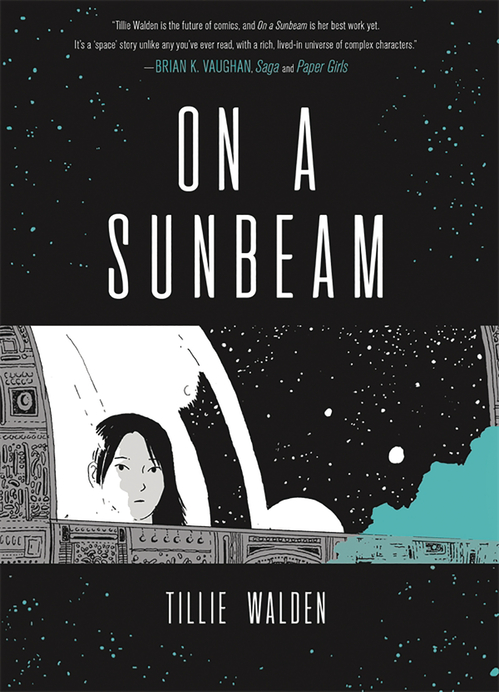
On a Sunbeam Cover Art by Tillie Walden
11. On a Sunbeam
Writer/Artist: Tillie Walden
Publisher: First Second
On a Sunbeam is sci-fi in the way that Andreas Tarkovsky’s films are sci-fi. There’s not all that much science involved. Instead, what you have are stories about people, viewed from the outside, without direct windows into their feelings and motivations. Walden’s all-female cast doesn’t spend that much time talking about their feelings. Instead, they’re physically active as they try to figure themselves out in the same way that you’re trying to pry them apart. Is this a space story? Technically, yes, but the vastness of the universe and the ability of individuals to find their crew is more a metaphor than an excuse to draw control panels. It’s not a perfect book. The obtuseness of the characters’ motives can be frustrating at times, depending on your mood and your tolerance for this speed of narrative. At the same time, the black-light-poster-esque swirls and colors, the way in which Walden remains committed to her vision and the beauty of the environments she creates recommend it as a great entry among this year’s sci-fi comics. Hillary Brown
![]()
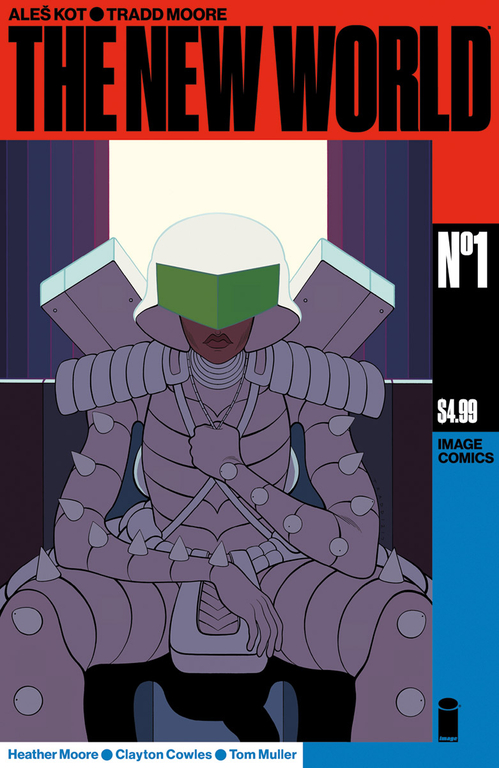
The New World Cover Art by Tradd Moore
10. The New World
Writer: Ales Kot
Artist: Tradd Moore
Publisher: Image Comics
It can be hard to describe some of Ales Kot’s work without falling back on of-the-moment, ripped-from-the-headlines references, but there’s so much more to The New World than “The Wall.” Material confronted secret prisons, encroaching technology and the ripple effects of long-term colonialism and western-driven wars while looking at deeply intimate interpersonal relationships. Generation Gone flipped “millennial” and superheroes over and looked at the squishy underbelly of both, delivering a story that was part Akira and part Howl. It was thrilling to see him tackle a story with artist Tradd Moore, who has knocked everything he’s ever drawn out of the park, from the Luther Strode series to his far-too-short run on All-New Ghost Rider. The New World is something of a Romeo and Juliet for a new era, where technology, television and the powerful few dictate the terms of so much of what we do. A romance, but one set in a world that looks closer to Demolition Man than what we might recognize today. But as with Kot’s run on Secret Avengers, he and Moore find plenty of room for genuine character beats between the high concepts, and more than enough humor to balance out the heartbreak. The New World, like so much great science fiction, walks an expert tightrope between its contemporary influences and its timeless ideas. Caitlin Rosberg & Steve Foxe
![]()

Friendo Cover Art by Martin Simmonds
9. Friendo
Writer: Alex Paknadel
Artist: Martin Simmonds
Publisher: Vault Comics
The partnership between Vault Comics and British collective White Noise Studios proved especially fruitful for sci-fi and fantasy this year: in addition to this entry and the next, Deep Roots just barely missed the cut, and These Savage Shores would absolutely be on this list (and rather high up on it, at that) if it had shipped the required minimum of three issues in 2018. Alex Paknadel first crossed Paste’s radar for his writing on Arcadia, a bold sci-fi story from BOOM! Studios that imagined the next steps for a world in which everyone has uploaded their consciousness into digital form. Friendo aims a little closer to reality, but still one significantly changed by digital marketing run amok. We first meet protagonist Leo after he’s involved in a car crash that was actually an attempt at viral advertising, and we follow him as he meets Jerry, his new personalized virtual-reality friend. As with Arcadia and Turncoat, Paknadel is skilled at taking a somewhat familiar premise and pushing it to the next level, which is what gives Friendo its J.G. Ballard-for-the-21st-century edge. Joining Paknadel is Punks Not Dead artist Martin Simmonds, who digital artwork perfectly captures the ever-so-slightly dystopian tomorrow of Los Angeles’ already kinda-dystopian today. If you like your sci-fi with bite, Friendo is a must-read this year. Steve Foxe
![]()
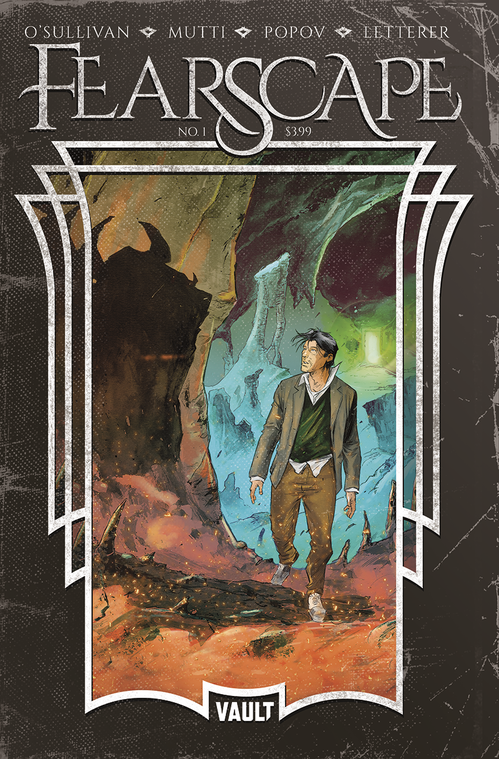
Fearscape Cover Art by Andrea Mutti
8. Fearscape
Writer: Ryan O’Sullivan
Artist: Andrea Mutti
Publisher: Vault Comics
Fearscape is one of those rare comics that really needs to be read to be understood, as a short pitch simply doesn’t do it justice. Yes, there’s a plot about a Muse who comes to Earth once a generation to recruit our greatest Storyteller to combat the titular Fearscape, but that sounds like the one-billionth forgettable tribute to the peak literary days of DC’s Vertigo imprint from 25 years ago—and that’s the point. From the delightfully satirical, divisive first page (a nine-panel gird of pure exposition), it’s clear that writer Ryan O’Sullivan and artist Andrea Mutti are taking the piss out of every mediocre writer who ever fashioned himself the next Alan Moore or Neil Gaiman but didn’t have the chops to back it up. Fearscape isn’t purely a diss track—there’s substance beyond the subtle digs—but anyone who bemoans the faux-deepness of most meta-fantasy comics will want to pick this one up. Steve Foxe
![]()
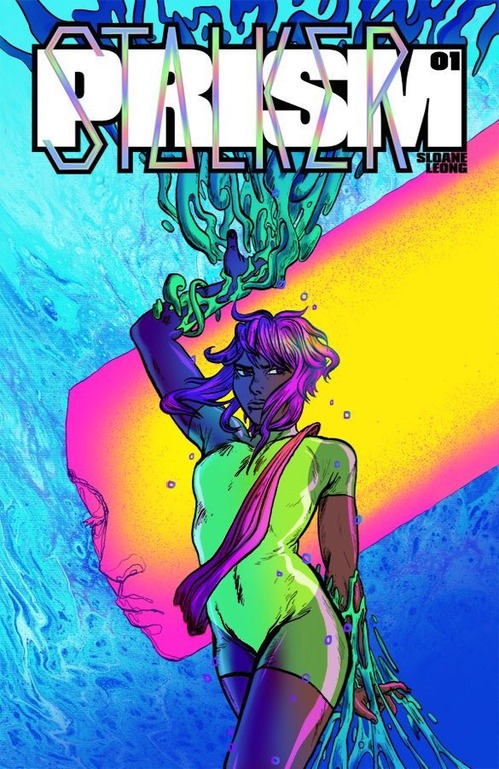
Prism Stalker Cover Art by Sloane Leong
7. Prism Stalker
Writer/Artist: Sloane Leong
Publisher: Image Comics
Prism Stalker is easily one of the most beautiful comics of 2018. It’s Sailor Moon meets Octavia Butler—a magical girl story that explores colonialism and the ways it impacts culture, both on a larger scale and individually. Prism Stalker follows Vep, a young girl whose tribe is rescued from a contaminated planet by an intergalactic consortium who rescue (or subdue) sentient peoples they find productive. Vep is recruited to a mysterious academy that promises notoriety and stability to those who excel in its service, but is forced to confront her distant relationship with her culture and what it means for her ability to succeed in the Chorus’ employ. Leong’s art is stunning, the rough linework and vibrant palette breathing emotion into every panel; Prism Stalker is powerfully atmospheric, creating a rich backdrop for Vep’s personal journey to find her place in a world that wants her to forget what little she knows about herself. This is a powerful and engrossing comic that leans heavily into all the weirdness the sci-fi genre has to offer. C.K. Stewart
![]()
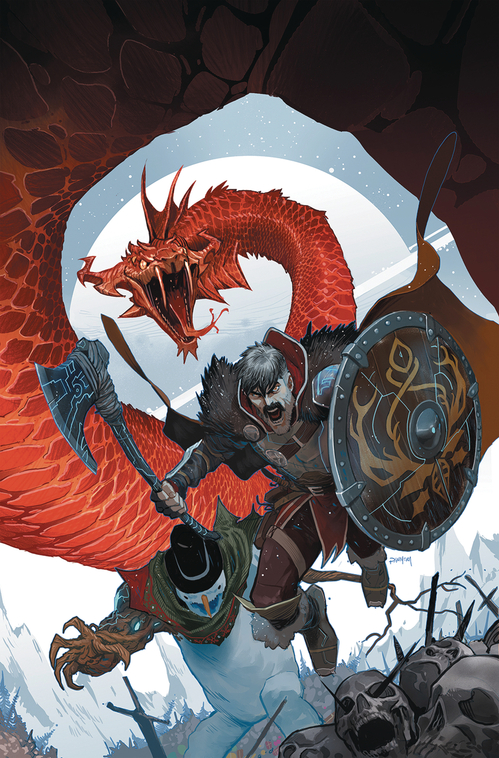
Klaus and the Crying Snowman Cover Art by Dan Mora
6. Klaus and the Crying Snowman
Writer: Grant Morrison
Artist: Dan Mora
Publisher: BOOM! Studios
If we wanted to ruffle some feathers, we would have put Klaus and the Crying Snowman on our list of the 10 Best Superhero Comics of 2018, since BOOM! Studios’ annual Klaus stories are better Superman stories than anything starring the Man of Steel himself—but there’s no room for debate that it deserves a spot on the sci-fi/fantasy countdown. Grant Morrison and Dan Mora’s initial Klaus series was fine, but took until the final issues to really feel like a Morrison joint. Each subsequent Christmastime one-shot, on the other hand, encapsulates the boundless imagination—and unfettered optimism—that marks Morrison’s finest work. Every scene of Klaus and the Crying Snowman contains more creativity than dozens of straightforward superhero series that came out in 2018, and Mora’s artwork has grown by leaps and bounds with each passing year (this issue makes a strong case that Marvel needs to get him on Thor before Ragnarok claims us all). Christmas can be a stressful, or at least expensive and heavily commercialized, time of year, but in Morrison and Mora’s hands, it’s exactly what it should be: a reassuring, warm embrace in the middle of winter’s coldest nights. Steve Foxe
![]()
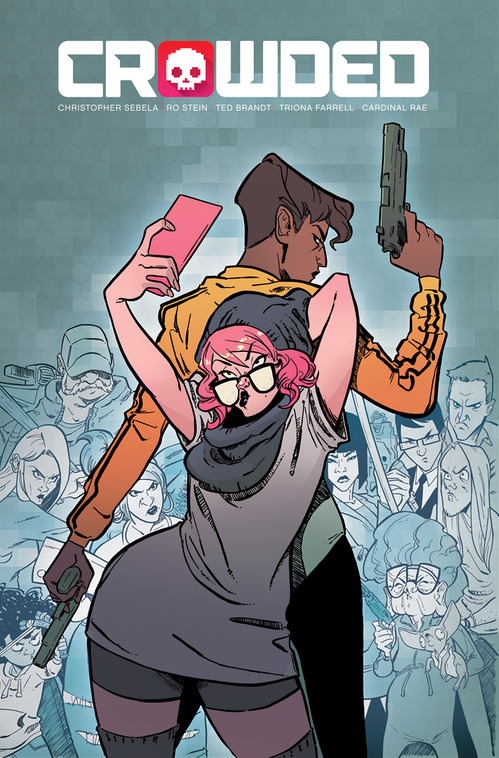
Crowded Cover Art by Ro Stein & Ted Brandt
5. Crowded
Writer: Christopher Sebela
Artists: Ro Stein & Ted Brandt
Publisher: Image Comics
Though it isn’t the first story to tackle the fears surrounding the role social media has come to play in our lives, Crowded is one of the smartest and funniest projects to do so. The plot reads like a wittier Black Mirror episode: a young woman struggles to evade people who are trying to kill her because of an app that allows people to put a price on each other’s heads. But Crowded feels bigger and brighter than just a single episode, picking apart the layers of motivations and needs that leave people so willing to inflict violence on each other, both online and in person. Ro Stein and Ted Brandt are particularly skilled when it comes to juggling lots of new characters and action sequences in a few short panels, and Christopher Sebela’s sharp observations about human nature and even sharper humor make it a joy to read. Before the book even hit shelves, it was optioned by Rebel Wilson, who plans to produce and star in a film based on the series. But Sebela, Stein and Brandt absolutely delivered regardless of the sky-high expecations that kind of news sets, and Crowded is the sort of book you have to read to believe. Caitlin Rosberg
![]()
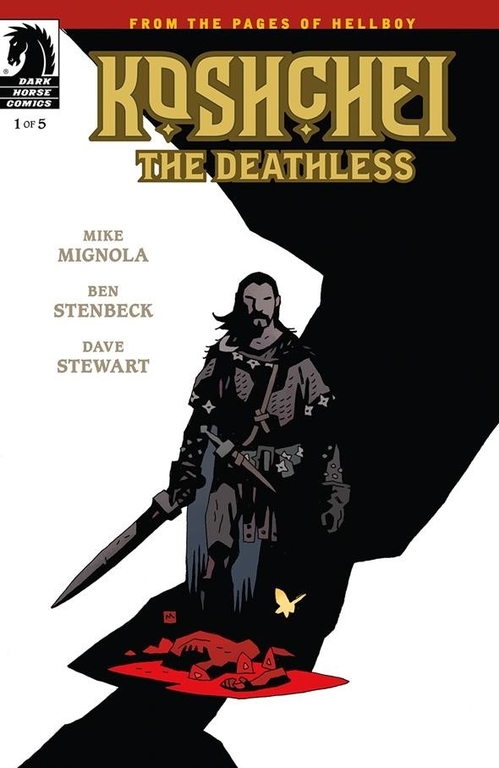
Koschei the Deathless Cover Art by Mike Mignola
4. Koschei the Deathless
Writer: Mike Mignola
Artist: Ben Stenbeck
Publisher: Dark Horse Comics
At the very beginning of 2018, Mike Mignola and frequent collaborator Ben Stenbeck dug into the past of one of Hellboy’s former foes, Koschei the Deathless. With both of them trapped in Hell together, Koschei takes the time to explain to Hellboy how he became the captive of the witch who sent him to kill Hellboy in the first place. Mignola’s visual style is of course instantly recognizable for most comic fans, but Stenbeck’s own skill and the sharp blacks that he and colorist Dave Stewart use to carve out Hellboy’s world are almost as closely associated with the “Mignolaverse” at this point, and with Koschei, he establishes himself alongside Guy Davis and Duncan Fegredo as one of Mignola’s strongest collaborators. Mignola is often at his best when leaning on traditional folktales like Koschei and Baba Yaga, and this six-issue series is no different, spinning a surprisingly emotional and far-reaching saga out of, essentially, a mini-boss from Hellboy’s ongoing adventure. The last year has seen the spotlight shared with several supporting players in the world of Hellboy, but Koschei the Deathless emerges as one of the strongest standalone stories in the massive Mignolaverse, and one of 2018’s best fantasy yarns. Caitling Rosberg & Steve Foxe
![]()
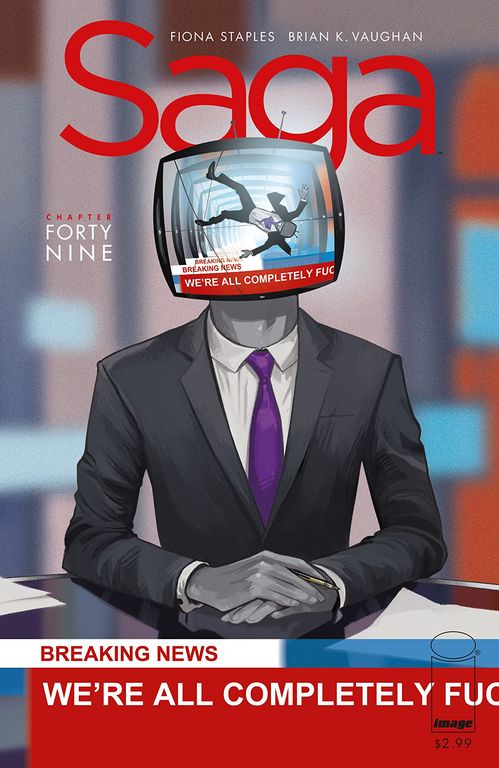
Saga Cover Art by Fiona Staples
3. Saga
Writer: Brian K. Vaughan
Artist: Fiona Staples
Publisher: Image Comics
Saga stands right at the intersection of sci-fi and fantasy in much the same way that Star Wars does, unabashedly mashing its futuristic technology with epochs-old mysticism without ever overshadowing the wild cast of characters that make up the heart of this long-running fan favorite. Well, the characters who are left, anyway. Throughout 2018, over 50 issues into the series, Brian K. Vaughan and Fiona Staples killed off more main characters than their readership could process—and then declared a one-year hiatus. The most recent arc of Saga should come with a discount coupon for a therapy dog visit, just to lessen the blow (and no, we won’t spoil who dies, but rest assured that we’re still not okay). A body count alone doesn’t justify acknowledgement on both this list and our main countdown, though; what does is Vaughan and Staples’ ability to shockingly upend the story in ways that never feel cheap or exploitative. Like a rollercoaster ride in the dark, Saga’s next twist is never, ever predictable. It’s beyond cruel that we have to wait a year after that issue, but there’s not a doubt in our minds that Saga #55 will make every second worth it. Steve Foxe
![]()
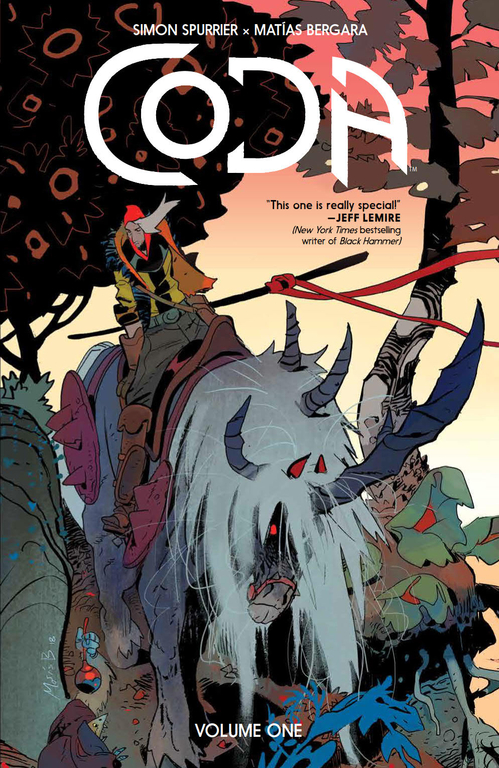
Coda Cover Art by Matías Bergara
2. Coda
Writer: Simon Spurrier
Artist: Matías Bergara
Publisher: BOOM! Studios
Simon Spurrier has an established track record with the strange and unusual, from The Spire to Cry Havoc to The Dreaming, the crown jewel of DC Comics’ Sandman Universe (which could just as easily share this spot, but we’re spreading the love). In the pages of BOOM! Studios series Coda, Spurrier teams with Cannibal artist Matías Bergara for another strange adventure, this time a high-fantasy tale of the post-magic apocalypse—a glorious world of elves, bards and dragons laid to waste by a bizarre catastrophe. Spurrier and Bergara deliver a surreal mix of strange faces and places that blends the over-the-top fantasy aesthetics of Dungeons & Dragons with the ecological wastelands of Mad Max, complete with Spurrier’s unmistakable flair for clever dialogue and a surly hero whose intentions are often just as bad as his attitude. Bergara in particular does stunning color work; the world of Coda feels warm and vibrant and weirdly inviting despite the circumstances, and remains engaging even in its gruesome moments. C.K. Stewart & Steve Foxe
![]()
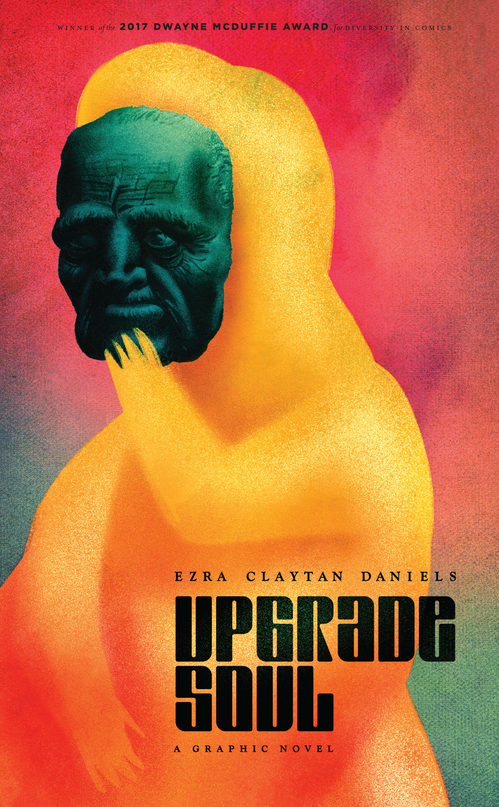
1. Upgrade Soul Cover Art by Ezra Claytan Daniels
1. Upgrade Soul
Writer/Artist: Ezra Claytan Daniels
Publisher: Lion Forge
It may not be a surprise to find Upgrade Soul topping this breakout list after its performance on our main list, but we really couldn’t justify any other placement. In Upgrade Soul, a well-off elderly couple funds an experimental new medical treatment to restore youth, on the condition that they’re the first human test subjects. When they wake up days later, they discover that the test wasn’t exactly a success. It’s difficult to explain much more without undercutting Daniels’ masterful pacing, but Upgrade Soul has profound things to say about mortality, aging, identity and the fundamental sense of self. One could shallowly compare it to an episode of Black Mirror (shorthand that’s perhaps becoming too much of a crutch in discussions of sci-fi stories), but it’s operating on a higher level, reaching at some of the same themes explored by Kazuo Ishiguro and Ted Chiang. Every choice, every component of Upgrade Soul simply works, and we’ll probably all still be reflecting on it by the time 2019’s year-end lists arrive. Steve Foxe